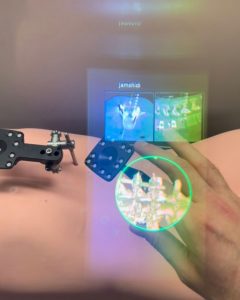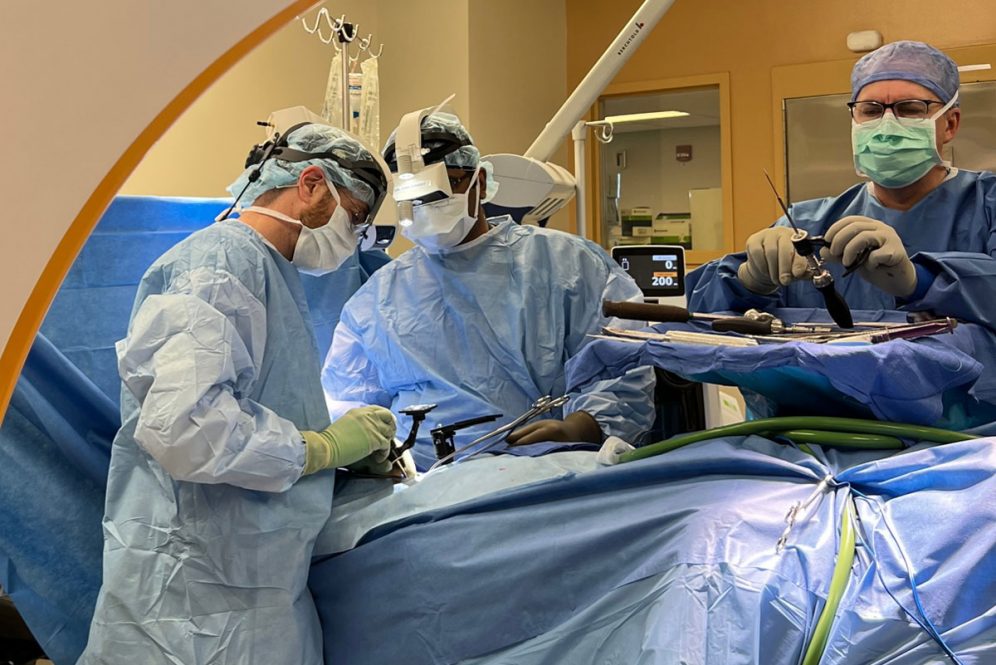This allows us to do even more complicated procedures in a more efficient and safer manner. — Dr. Isaac Moss
Spine surgeons at UConn Health are reaching new heights in both traditionally and minimally invasive spine surgery with technology that enables them to essentially see the spine through the patient’s skin.
“It’s X-ray vision, in a way,” says Dr. Isaac Moss, chair of UConn Health’s Department of Orthopedic Surgery and co-director of its Comprehensive Spine Center. “This allows us to do even more complicated procedures in a more efficient and safer manner.”
Using the Augmedics xVision and the Airo TruCT Mobilr Imaging systems, Moss performed central Connecticut’s first “augmented reality” spine surgery, a posterior cervical decompression and fusion to address spinal cord compression and progressive weakness, with the new system guiding the placement of screws to stabilize the patient’s spine.

Before the arrival of this enhanced spinal navigation system, surgeons would use interoperative X-ray to project a two-dimensional image of the surgical field on a screen. Now, they can work with a 3D field of vision.
“It actually projects the images directly onto the outward field, so with the headset you’re, so to speak, looking through the patient, almost like a heads-up display on your windshield,” Moss says. “Instead of having to look up and see the CT scan, you see the CT scan where it is inside the patient.”
The technology expands the range of spine surgeries that can be done using a minimally invasive approach.
“It allows you to do more complicated procedures through smaller exposures, which leads to less bleeding, less potential infections, a shorter recovery —all the benefits of minimally invasive spine surgery,” Moss says. “We already have a complex minimally invasive program here. We have a long history of innovation, and we are a market leader in minimally invasive spine surgery.”
Candidates for augmented reality spine surgery include patients with spinal stenosis, spinal deformities, age-related degenerative spine disorders, and spinal tumors.
Learn more about the UConn Health Comprehensive Spine Center, or call 860-679-6662 for a consultation.



